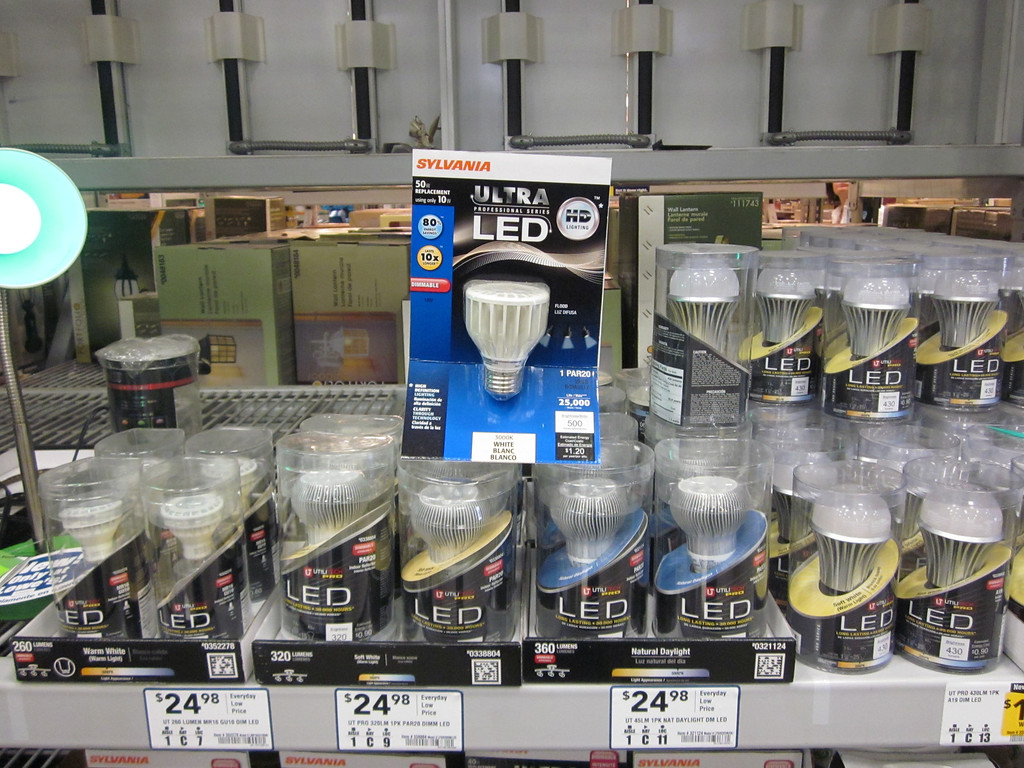Nearly 70% of U.S. households have a tree prominently displayed inside their house this time of year. Some people choose to cut down real trees, while others use artificial trees. No matter what type of tree you have though, chances are that it is decorated with holiday lights. Strings of holiday lights aren’t just on trees, they also decorate the exteriors of residential and commercial buildings. When you add up all of those little lights that make our holidays brighter, it can get quite expensive.
Each tiny incandescent bulb on a string of lights consumes approximately 0.4 watts each (shown below). If you have 100 lights on a light strand, the strand is consuming 40 watts. Most of the electricity consumed doesn’t even help your decorations sparkle. Traditional holiday lights transform only about five percent of the power that they use into light, while the rest is emitted as heat. Colored incandescent holiday lights are even less efficient, with as little as one percent of the energy being converted to light. Considering that there are 37.1 billion bulbs operating for approximately 150 hours each year, the total electricity consumption is 2,200 GWh, according to a 2006 ENERGY STAR study.

Today there are many options for holiday lights including ENERGY STAR qualified light strings. In order to qualify for the ENERGY STAR rating light strings must consume at least 70% less energy than conventional incandescent strands. They also last up to 10 times longer than traditional lights.
The most energy efficient light strands on the market are those that use light emitting diodes, better known as LEDs (shown below). LED light strands use up to 90 percent less energy than incandescent bulbs to produce the same amount of light. LED holiday lights come in all different colors, sizes, shapes, and patterns.

Although LEDs tend to cost more than incandescents, they last much longer and consume only a fraction of the energy.
According to ENERGY STAR, if all decorative light strings sold in the U.S. this year were ENERGY STAR qualified, we would save over 700 million kilowatt hours of electricity per year!
If you would like to compare electricity consumption and costs of various holiday lights, you can use this handy Holiday Lighting Calculator from Dominion Power.
